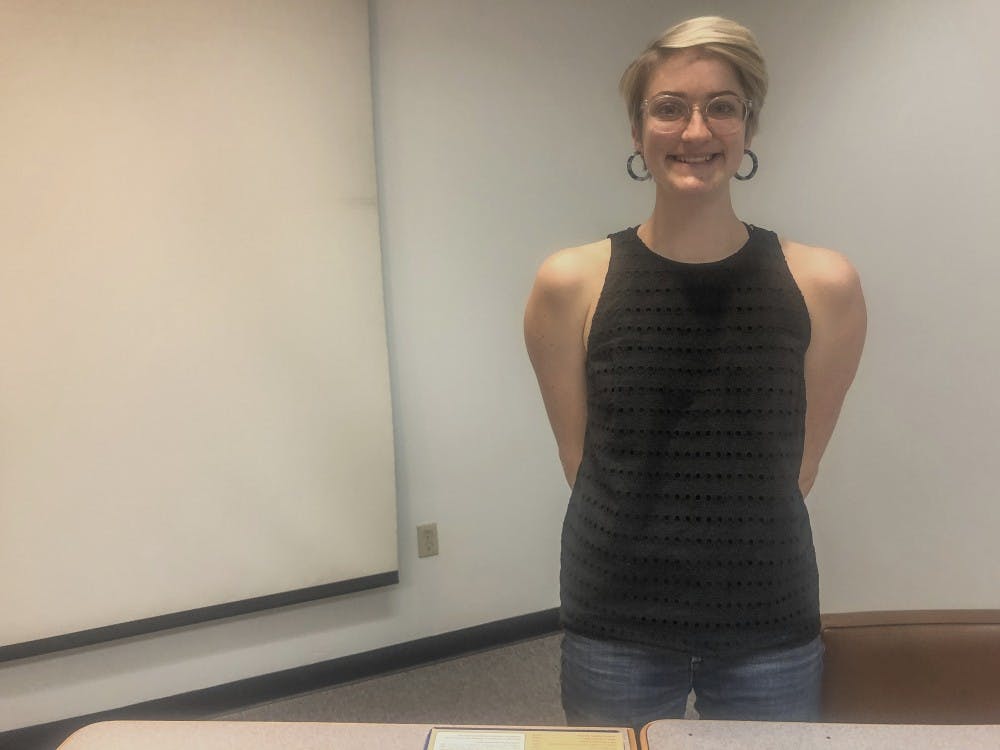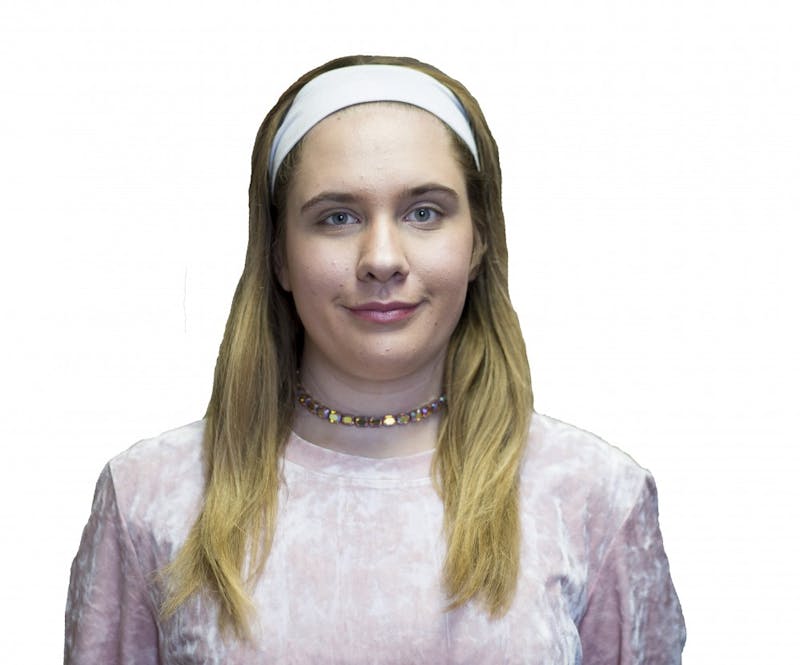Artist-in-Residence uses printmaking to showcase human oppression of nature

The latest 2019 Barstow Artist-in-Residence aspires to critique Western culture's oppression of nature and invasion of ecology through sculpture, animation and printmaking.
On Sept. 17 in Wightman Hall, home of Central Michigan University's Department of Art and Design, printmaker Mary Claire Becker discussed her artistic mission to better understand capitalism's annexation of the natural realm.
Becker, a North Carolina native, said she is continually working with and critiquing the Oxford English Dictionary definition of nature: "the phenomena of the physical world collectively, including plants, animals, the landscape and other features and products of the earth, as opposed to humans or human creations."
"I'm uneasy about a definition of nature that excludes humans, because in the context of our industrial system and our means of production, we have really begun to have a great (impact) on other ecological and geological systems," she said.
Becker said she considers herself a "nature lover" who thrives in a "happy place" of unedited wilderness and serendipity. But she makes herself uncomfortable in the expanded field of printmaking, including digital print, laser and plotter cutting, slip cast ceramics, video installation and animation.
She said by simply escaping into an ideal image and expectation of what the natural world is, she forgets how all individuals in Western society contribute to skyrocketing industry and associated pollutants along with climate change.
"I know I'm being kind of tongue-in-cheek and sarcastic, and the message that I'm putting forth is a little bit dark and a little bit doomsday and I'm not really providing any solutions, but I think it's important for us to sit with this discomfort with the little bit of powerlessness that exists as a consumer," she said. "This is a part of our reality and we didn't necessarily ask for it."
The Barstow Artist-in-Residence program, which was established in 1993 from donations made by Midland architect Stephen Barstow to the department of art and design upon his death, provides a residence, studio, university resources and a stipend to one artist each year.
Some of Becker's artistry is influenced by a need to find ownership of the natural realm and to deliver it to urban society. This includes the Victorian-conceived fad of filling homes with ferns and popular investments in terrariums, cabinets of curiosity and natural history museums.
Her 2018 pieces include "Garland," a piece inspired by a woman who used porcelain creatures to provide her company and the comfort of being surrounded by artificial life.
There is also "Pariour Bramble (Pigeon Year)," which exhibits an extinct population of Americans birds struggling to reclaim a wallpaper designed by the European colonists who swallowed their existence by frequent hunting.
Her silkscreen and porcelain sculpture collection, "View Master Series: Rolling Hills, Babbling Brook and Majestic Mountains" exist as three digital stimulation devices designed to make viewers wonder if someday natural treasures like the Florida Everglades and Yellowstone National Park will only exist in projections.
"We use (different things) so we can be reminded of the nature we know and love in our day-to-day life," she said. "(But sometimes) I see more images of flowers and scents of flowers going from building to building in (my) urban environment that I'm often looking more at the replica of a flower made for us than thinking about that flower itself."




